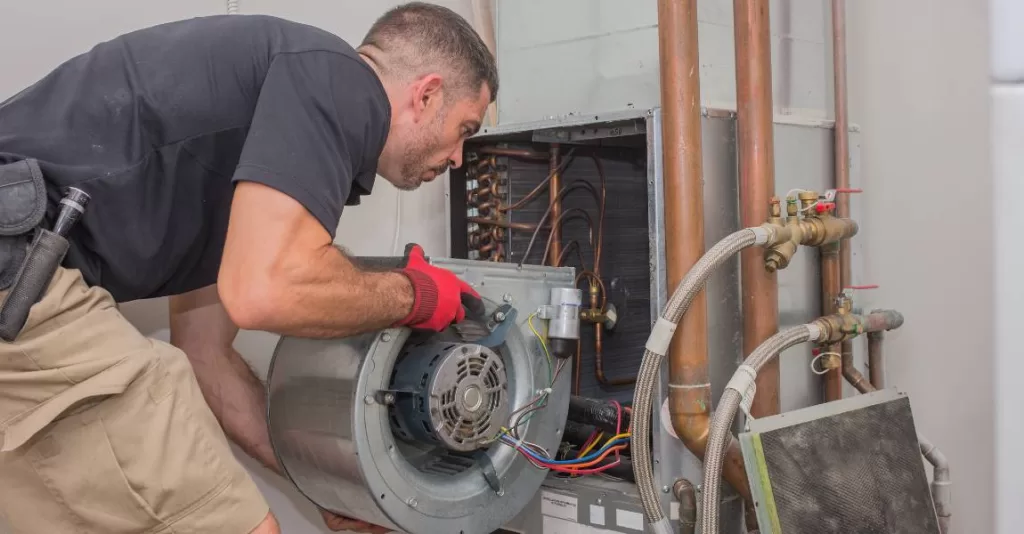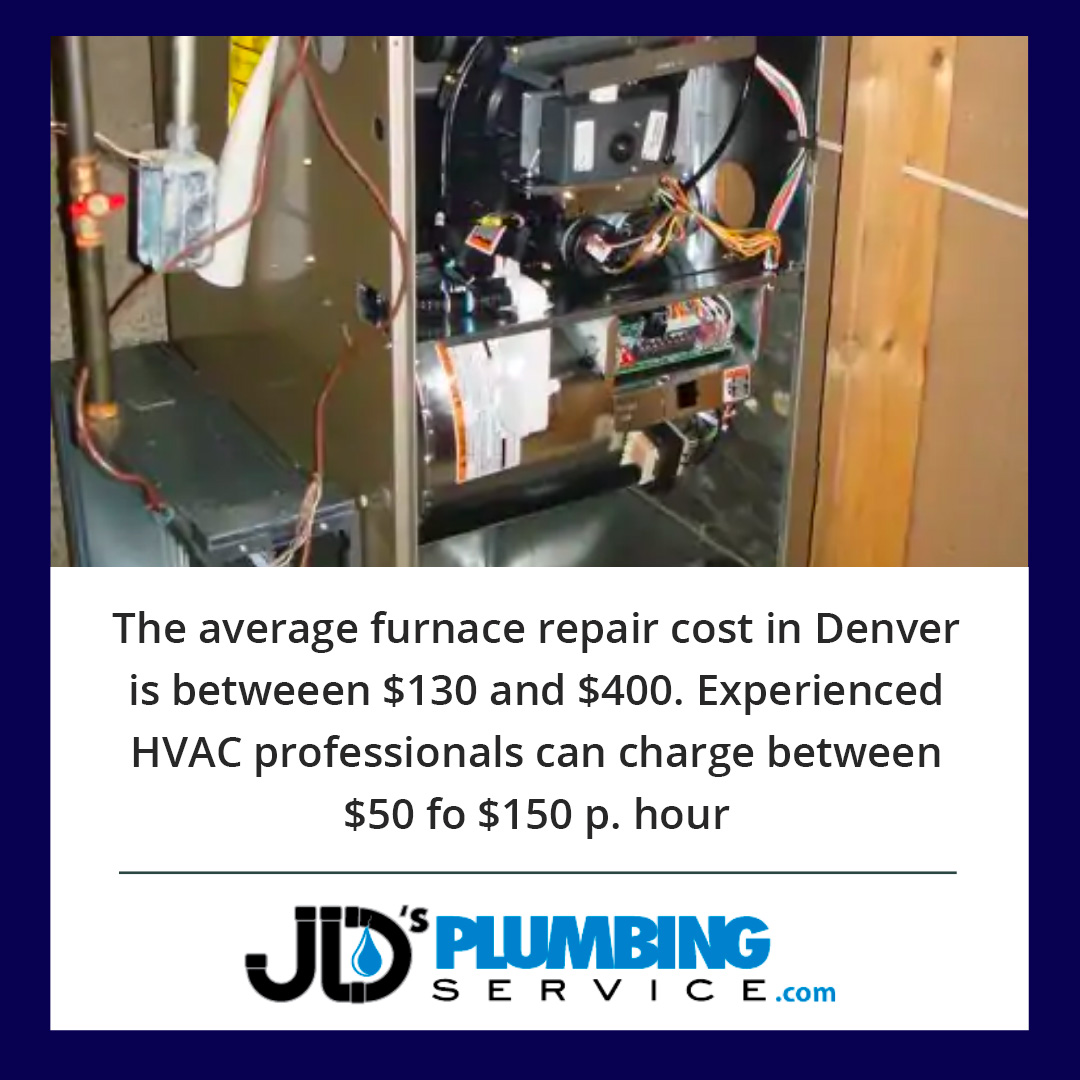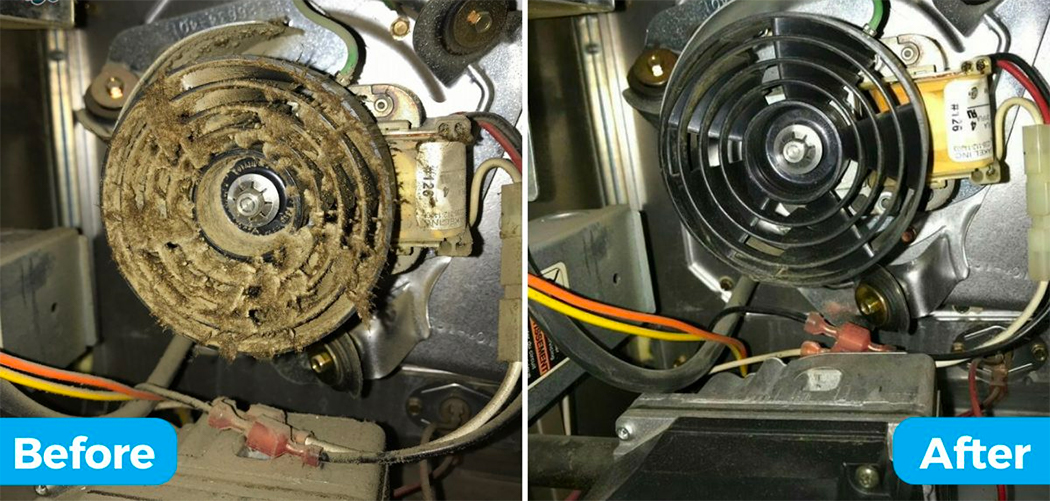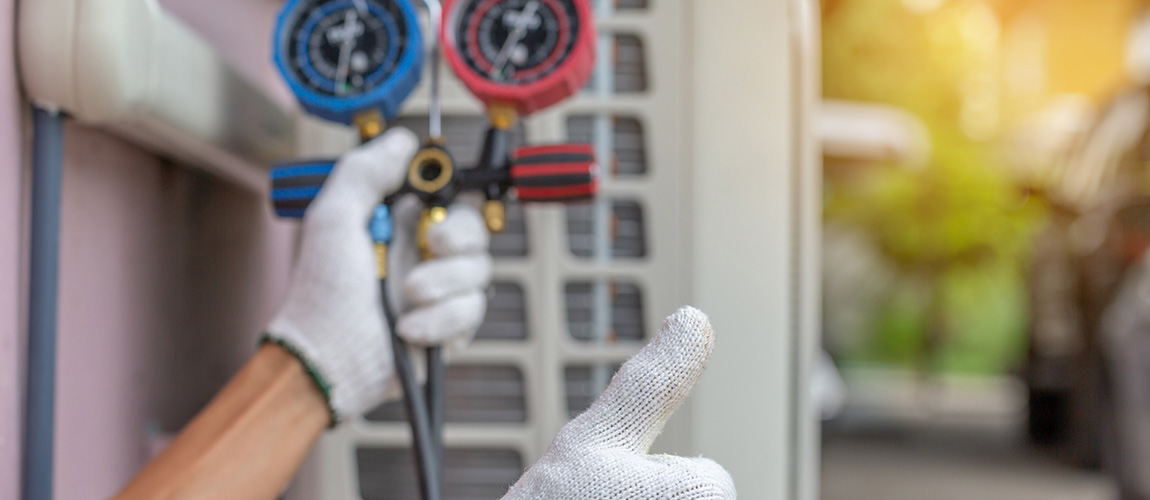Table of Contents
You installed a new furnace a couple of years ago. It’s been working perfectly fine, and throughout the winter, you have enjoyed the warmth of your home. Then, one day, it suddenly breaks down.
You wonder what the reason could be, and that’s when you remember that you didn’t do the regular furnace inspection that is supposed to be done yearly to avoid costly furnace repair bills.
You took your furnace for granted, and now thousands of dollars in repair bills are straining your budget because you didn’t follow the Furnace Tune-up Checklist.
While this may sound frustrating, it’s a fairly common scenario for many homeowners in Denver, Colorado.

Most people expect their furnaces to work for long periods without issues or breakdowns. But that doesn’t happen automatically. It would be best if you had it regularly inspected, at least once every fall. Check out more about 10 Fall Furnace Maintenance Tune-Up Tips Denver.
All HVAC equipment, regardless of its make, model, or year of installation, requires regular yearly tune-ups if you don’t want unexpected breakdowns.
What are the Costs of Ignoring Yearly Furnace Checkups?
Water pipe bursts and damages to your commercial and/or residential property are just some of the unwelcome costs that eat up your budget when furnaces are ignored for routine checkups.

Free Download: HVAC Replacement Process in Denver [A Definite Guide]
Filing for insurance claims is also no joke. There are nitty-gritty details in the terms and conditions that may disqualify you when filing an insurance claim.
HVAC professionals like JDs Plumbing Heating & AC often catch problems in their early stages before they become a nightmare for you.
Furnace inspection and repairs should only be conducted by trained, licensed, and experienced HVAC professionals. Inexperienced vendors often cost more in unexpected repairs and damages.
Benefits of Using a Yearly Furnace Tune-Up Checklist With JDs Plumbing Heating & Air Conditioning
Calling experienced and qualified HVAC professionals like JDs Plumbing Heating & Air Conditioning in Denver comes with many benefits.
We charge a nominal furnace checkup fee throughout the year, which is nothing compared to the discomfort, stress, and expense you could endure when your furnace breaks down in the middle of an icy Denver winter. With Christmas just around the corner, it is time you call for a routine checkup.
What’s Included in the Furnace Tune-Up Checklist?
When calling an HVAC professional in Denver, ask them for a furnace tune-up checklist. A typical tune-up checklist, when performed by qualified technicians, should include all of the following:
1. Thermostat Calibration
Proper thermostat calibration ensures that your furnace responds accurately to temperature settings, providing consistent warmth and preventing energy waste.
2. Inspection of Electrical Connections
Technicians check and tighten all electrical connections to ensure your furnace operates safely and efficiently. Faulty connections can lead to electrical failures and fire hazards.
3. Lubrication of Moving Parts
Moving parts, such as the blower motor, need to be properly lubricated to prevent friction, which can lead to inefficiency and equipment failure.
4. Checking Heat Exchanger
The heat exchanger is a critical component of your furnace, and cracks or damage can pose serious safety risks, such as carbon monoxide leaks. A thorough inspection is vital.
5. Cleaning Burners
Dirty burners can cause inefficient combustion, leading to higher energy bills and poor furnace performance. Regular cleaning ensures the burners operate efficiently.
6. Inspection of Blower Components
The blower motor and fan are inspected to ensure proper airflow, essential for heating your home efficiently.
7. Checking the Gas Pressure
Gas pressure must be at the correct level for your furnace to operate efficiently and safely. Low or high pressure can lead to poor combustion or furnace failure.
8. Inspecting and Cleaning the Air Filter
A clean air filter is crucial for maintaining indoor air quality and ensuring your furnace operates efficiently. A dirty filter can restrict airflow and put unnecessary strain on the system.
9. Inspecting Safety Controls
Safety controls such as the limit switch are inspected to ensure they function correctly and will shut off the furnace if it overheats.
10. Inspecting the Flue and Ventilation System
Proper ventilation is essential for safely exhausting combustion gases from your furnace. Technicians will check for blockages or leaks that could cause dangerous situations.
11. Checking and Adjusting Fan Speed
Fan speed adjustments ensure that your furnace delivers the right airflow to maintain your home’s desired temperature.
12. Testing the Ignition System
The ignition system is responsible for starting the furnace. A faulty ignition can lead to furnace failure, so regular testing is necessary.
13. Inspecting the Condensate Drain
In high-efficiency furnaces, the condensate drain must be clear to prevent water damage and ensure the furnace operates efficiently.
14. Checking for Gas Leaks
Gas leaks can be hazardous. A thorough check of all gas connections ensures no leaks, keeping your home safe.
15. Inspecting Ductwork for Leaks
Leaky ducts can significantly reduce the efficiency of your heating system. Inspecting and sealing any leaks ensures that warm air is delivered efficiently to all areas of your home.
16. Testing for Carbon Monoxide
Carbon monoxide testing is crucial for ensuring that your furnace isn’t producing harmful levels of this dangerous gas.
17. Inspecting Fan Limit Switch
The fan limit switch controls the blower and ensures that it operates only when the furnace is at the correct temperature. A malfunctioning switch can cause problems with your furnace’s operation.
18. Checking Furnace Blower Belt
The blower belt needs to be in good condition to ensure efficient airflow. A worn or broken belt can cause your furnace to overheat and fail.
19. Inspecting Thermocouple
The thermocouple is responsible for detecting whether the pilot light is lit. If it’s faulty, the furnace won’t start properly, so it’s important to check this component regularly.
20. Inspecting Flame Sensor
A dirty or faulty flame sensor can cause the furnace to shut down unexpectedly. Regular cleaning and inspection ensure your furnace runs smoothly.
21. Testing Electrical Components
All electrical components are tested to ensure they are functioning correctly, including the circuit board, relays, and transformers.
22. Checking the Exhaust System
A proper exhaust system ensures that harmful combustion gases are vented safely from your home. Inspecting the exhaust system prevents dangerous gas buildup.
How Often Should You Perform a 22-Point Furnace Tune-Up?
It’s recommended to perform the 22-point furnace tune-up checklist annually, ideally before the heating season begins. Regular maintenance ensures your furnace is prepared for the colder months and operates efficiently, keeping your home warm and safe. Some homeowners may also benefit from bi-annual inspections, particularly if their furnace is older or they live in areas with extreme weather conditions.
You need a yearly inspection regardless of when you installed your HVAC equipment. Your heating and cooling system manufacturer requires yearly furnace inspection as part of its warranty coverage. If it is ignored, you can lose your warranty, which can be costly.

Why are Regular Furnace Tune-Ups Important?
The older the furnace, the higher the chances of breakdowns. Therefore, it is important to have a comprehensive furnace inspection done in the fall or summer every year.
With Christmas just around the corner, call JDs Plumbing Heating & Air Conditioning to schedule a furnace tune-up. You´ll have peace of mind to spend time with your friends and family in Denver, CO, knowing that your furnace will not let you down throughout Christmas and New Year.

JDs Plumbing Heating & Air Conditioning is Denver’s leading HVAC furnace specialist. Call us now at 720.783.4879 to schedule a complete furnace inspection.
The Financial Benefits of the 22-Point Furnace Tune-Up
When considering the 22-point furnace tune-up checklist, it’s not only about ensuring your furnace performs at its best. It’s also about saving money in multiple ways. Regular maintenance can prevent small issues from turning into expensive repairs or total furnace replacement. For example, a cracked heat exchanger or a malfunctioning blower motor might cost thousands to replace if left unchecked. However, these problems can often be caught early with a simple tune-up, saving you from unexpected and hefty repair bills.
Additionally, a furnace that operates efficiently consumes less energy, meaning lower heating bills for your household. According to the U.S. Department of Energy, regular maintenance on your heating system can save up to 30% on energy costs annually. The 22-point furnace tune-up checklist ensures that every component of your system is optimized, allowing it to use less fuel to produce the same amount of heat.
Enhanced Safety Through Furnace Tune-Ups
Safety is one of the most important reasons for scheduling regular furnace maintenance. Furnaces burn fuel, producing heat and carbon monoxide as a byproduct. This gas can be lethal if it accumulates in your home due to a malfunctioning furnace. The 22-point furnace tune-up checklist includes thorough checks of the heat exchanger, ventilation system, and safety controls to ensure that dangerous gases like carbon monoxide are properly vented from your home.
Additionally, faulty electrical connections can pose a fire hazard. By tightening connections and ensuring that all electrical components are functioning properly, a furnace tune-up minimizes the risk of fires. This peace of mind is invaluable, particularly during the colder months when your furnace runs continuously.
Improved Comfort with the 22-Point Furnace Tune-Up
When your furnace is well-maintained using the 22-point furnace tune-up checklist, it heats your home more evenly and reliably. This ensures that every room in your house remains comfortable, without cold spots or uneven heating. Poorly maintained furnaces often struggle to keep up with temperature demands, leading to uncomfortable cold drafts or inconsistent warmth throughout your home.
A finely tuned furnace can also improve the speed at which your home reaches the desired temperature. If your furnace is inefficient, it may take longer to heat your home, causing unnecessary energy consumption and discomfort.
Increasing the Lifespan of Your Furnace
Furnaces are a significant investment, and the longer they last, the better return you get on your money. Following the 22-point furnace tune-up checklist helps extend the life of your system by addressing wear and tear before it leads to major breakdowns. Most furnaces are designed to last 15 to 20 years, but this lifespan can be dramatically shortened without regular maintenance. In contrast, homeowners who invest in annual tune-ups often see their furnaces last well beyond the expected life span, sometimes by 5-10 additional years.
Each component of your furnace—the blower motor, the thermostat, or the heat exchanger—has a limited lifespan. But when these components are regularly inspected and maintained, they can continue functioning optimally for many years, pushing off the need for a costly furnace replacement.
Environmental Impact of a Well-Maintained Furnace
A well-maintained furnace is good for your wallet and the environment. When your furnace operates efficiently, it uses less fuel, whether natural gas, oil, or electricity, to heat your home. This reduces your home’s carbon footprint by minimizing emissions. The 22-point furnace tune-up checklist ensures that your system runs as efficiently as possible, helping you reduce your energy consumption and do your part to combat climate change.
Some furnaces, especially older models, can produce higher levels of harmful gases when improperly maintained. This can contribute to air pollution and increase greenhouse gas emissions. You can reduce your furnace’s environmental impact by ensuring it is running cleanly and efficiently.
How to Schedule a 22-Point Furnace Tune-Up
Scheduling a 22-point furnace tune-up checklist is easy, and most HVAC companies offer this service as part of their regular maintenance packages. It’s best to schedule your tune-up in the fall, before the cold weather hits, to ensure your furnace is ready for winter. Many companies also offer discounts or special offers during the off-season, making it even more affordable to keep your furnace in peak condition.
When booking your tune-up, ask if the HVAC technician follows a comprehensive checklist, like the 22-point furnace tune-up checklist, to ensure that no aspect of your system is overlooked. A professional tune-up typically takes one to two hours to complete, but the benefits will last all winter.
Choosing the Right HVAC Company for Your Furnace Tune-Up
Not all HVAC companies are created equal, and choosing the right one for your 22-point furnace tune-up is important. Look for a company with a solid reputation, certified technicians, and positive customer reviews. Many companies offer guarantees on their services, giving you peace of mind that the job will be done right.
Additionally, it is a good idea to look for HVAC companies that offer maintenance plans. These plans typically include two annual check-ups, one in the spring for your air conditioning system and one in the fall for your furnace. This ensures your system is always running efficiently and often comes with perks like priority service, discounts on repairs, and no overtime charges.
Conclusion: Keep Your Home Warm and Safe with the 22-Point Furnace Tune-Up Checklist
In summary, the 22-point furnace tune-up checklist is an essential tool for maintaining your furnace’s efficiency, safety, and longevity. Regular maintenance saves you money by reducing energy bills, avoiding costly repairs, and keeping your home comfortable and safe throughout winter. By following this comprehensive checklist, you can ensure that your furnace runs at peak performance and provides reliable warmth for your family.
FAQs
- What happens if I don’t perform a furnace tune-up? Skipping a furnace tune-up can reduce efficiency, create higher energy bills, cause unexpected breakdowns, and create potential safety hazards like carbon monoxide leaks.
- How long does a furnace tune-up take? A furnace tune-up typically takes between 1-2 hours, depending on the complexity of the system and the thoroughness of the inspection.
- Is a furnace tune-up necessary every year? Yes, annual tune-ups are recommended to ensure your furnace operates efficiently and safely. Regular maintenance can prevent costly repairs and extend the life of your furnace.
- What happens if I skip a furnace tune-up? Skipping a furnace tune-up can lead to decreased efficiency, higher energy bills, unexpected breakdowns, and potential safety hazards like carbon monoxide leaks. Regular tune-ups are essential for maintaining optimal performance.
- How often should I follow the 22-point furnace tune-up checklist? To ensure optimal performance and safety, it’s recommended that you perform a furnace tune-up annually, preferably before the winter season starts.
- Can I perform a furnace tune-up myself? While some basic maintenance tasks, like changing the air filter, can be done by homeowners, a professional tune-up is recommended to ensure that all critical components are properly inspected and maintained.
JDs Plumbing Heating & Air Conditioning is Denver’s leading HVAC furnace specialist. Call us now at 720.783.4879 to schedule a complete furnace inspection.





